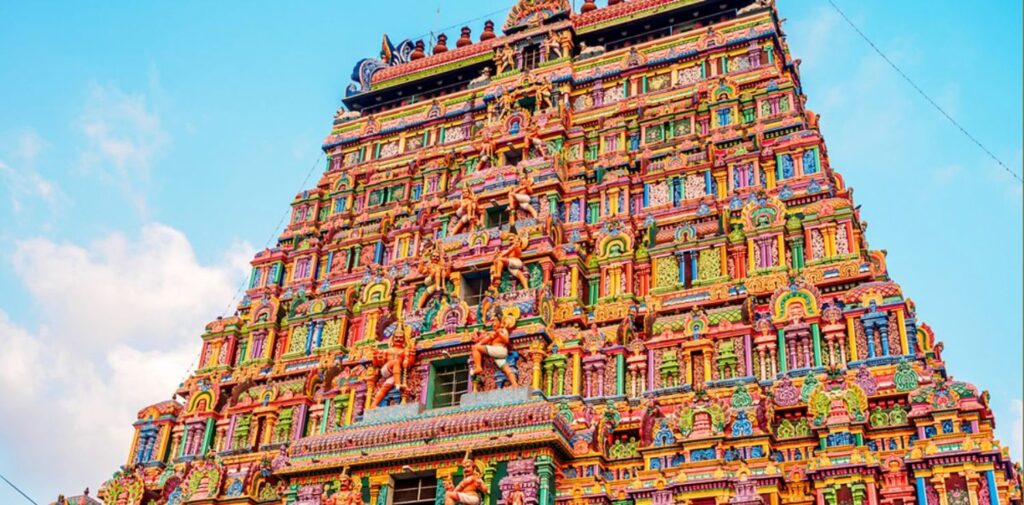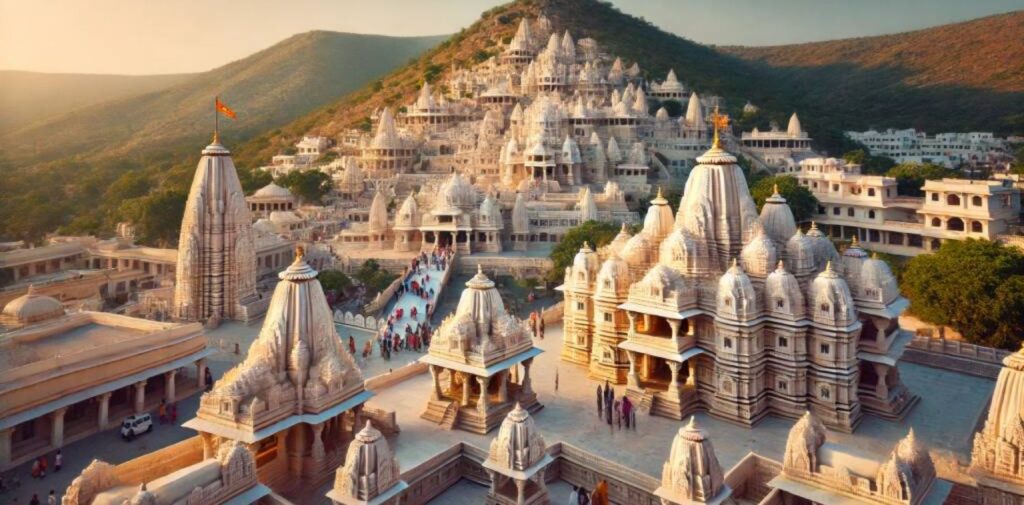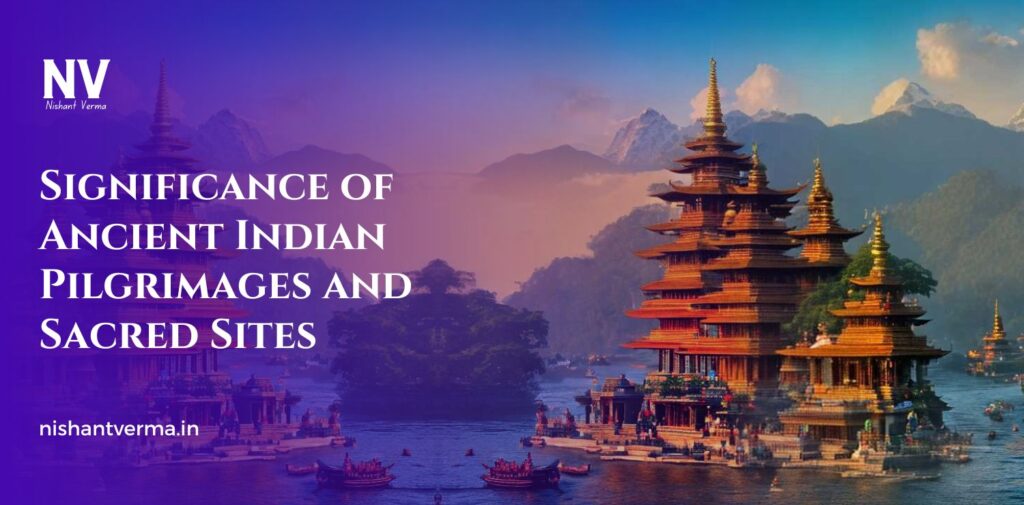India is a land rich in spiritual and religious history, with a deep connection to its sacred sites and pilgrimages that date back thousands of years. Pilgrimages in ancient India were not just religious journeys, but deeply transformative experiences for the people who embarked on them. These pilgrimages were seen as opportunities to seek spiritual enlightenment, connect with divine energies, and perform religious duties.
Sacred sites, from the banks of holy rivers to the peaks of mountains, were central to the lives of ancient Indians. The significance of these sites went far beyond just religious rituals. They were places of cultural exchange, learning, and spiritual growth. This article explores the role and importance of pilgrimages and sacred sites in ancient India, their cultural and spiritual relevance, and how they shaped the religious and social fabric of Indian civilization.
Ancient Pilgrimages: A Path to Spiritual Enlightenment
In ancient India, pilgrimages were considered essential for spiritual advancement. The journey to a sacred site was more than just a physical act; it was seen as a way to purify the mind and soul. People believed that visiting these sacred places helped them to attain moksha (liberation from the cycle of birth and rebirth) or punya (spiritual merit).
Pilgrimages were particularly important in the major religious traditions of Hinduism, Buddhism, and Jainism. Each of these religions had their own set of sacred sites that were associated with key events, deities, or teachings that shaped their beliefs.

The Importance of Pilgrimages in Hinduism
Hinduism, with its vast pantheon of gods and goddesses, holds a variety of sacred places across India. Pilgrimages in Hinduism are primarily associated with visiting temples, rivers, mountains, and other sites where divine presence is believed to be manifested. Key places like Varanasi, Mathura, Haridwar, and the temples of South India have held great significance for Hindus throughout history.
- Varanasi: Considered one of the holiest cities in Hinduism, Varanasi is believed to be the city where Lord Shiva resides. Pilgrims come here to bathe in the holy Ganges River to purify their sins and achieve spiritual liberation. The city is a center of learning, music, and culture, with temples that date back thousands of years.
- Haridwar: Situated on the banks of the Ganges, Haridwar is another prominent pilgrimage site. Hindus believe that taking a dip in the Ganges here will wash away their sins. The Kumbh Mela, held every 12 years, attracts millions of devotees to the city, emphasizing the importance of pilgrimage in Hindu tradition.
- Mount Kailash and the Mansarovar Lake: For Hindus, Mount Kailash is the abode of Lord Shiva. Pilgrims trek to this remote and sacred peak, believing that it brings immense spiritual benefits and the chance to unite with the divine.
Hindu pilgrimages were also closely tied to the concept of tirtha—sacred crossing points where the divine presence could be accessed. These places of pilgrimage were not only important for individual spiritual growth but also represented the unity of the community, as pilgrims would often travel together and participate in communal prayers and rituals.
Pilgrimages in Buddhism
In Buddhism, pilgrimages also played a vital role in connecting the devotee with the teachings of the Buddha. The four major sites of Buddhist pilgrimage in India are associated with key events in the life of Siddhartha Gautama, the Buddha, and include:
- Lumbini: The birthplace of the Buddha in Nepal, Lumbini is considered one of the most sacred places for Buddhists. Pilgrims visit here to honor the Buddha’s birth and to reflect on the teachings that would shape Buddhist philosophy.
- Bodh Gaya: It is in Bodh Gaya that Siddhartha Gautama attained enlightenment under the Bodhi tree. This site remains one of the most revered pilgrimage destinations for Buddhists. Pilgrims come here to meditate, learn, and honor the Buddha’s transformative experience.
- Sarnath: After attaining enlightenment, the Buddha gave his first sermon in Sarnath, near Varanasi. This site is significant for Buddhist teachings and practices, as it is where the Buddha taught about the Four Noble Truths and the Eightfold Path.
- Kushinagar: The place where the Buddha attained parinirvana (final nirvana after death) is located in Kushinagar. Pilgrims visit to pay their respects to the Buddha and reflect on his teachings on impermanence and the nature of life.
Buddhist pilgrims believed that visiting these sites would help them progress along the path to enlightenment. They not only visited the sites but also engaged in practices like meditation, prayer, and offerings.

Jainism and Sacred Pilgrimages
Jainism, another ancient Indian religion, also has a rich tradition of pilgrimage. The most significant pilgrimage sites for Jains are associated with the lives of the Tirthankaras, the spiritual leaders of Jainism. Some important Jain pilgrimage sites include:
- Palitana: Located in Gujarat, Palitana is considered the holiest site for Jains. The pilgrimage involves climbing a series of steps to reach the summit of Shatrunjaya Hill, where many temples dedicated to Jain Tirthankaras are located.
- Mount Abu: A revered site for Jains, Mount Abu is home to the famous Dilwara Temples, known for their stunning architecture and intricate carvings. Pilgrims visit to pay homage and reflect on the teachings of the Tirthankaras.
For Jains, pilgrimages were a way to purify the soul, practice self-discipline, and earn spiritual merit. The journey to these sacred sites was often seen as a reflection of the inner journey toward spiritual liberation.
Sacred Sites as Centers of Culture and Learning
Apart from their religious significance, sacred sites in ancient India often became centers of culture, knowledge, and intellectual exchange. Temples, monasteries, and other pilgrimage centers were not just places of worship but also hubs for learning, art, and philosophy.
- Learning and Philosophy: Many of India’s ancient universities, such as Nalanda and Takshashila, were located near sacred sites. Pilgrims who visited these places often engaged with scholars, learned about religious texts, and participated in philosophical debates. The presence of intellectual activity in these sacred places ensured that they remained vibrant centers of knowledge.
- Art and Architecture: Sacred sites also served as centers for artistic expression. Temples, stupas, and other religious structures were built with great attention to detail, showcasing the artistic achievements of the time. The architecture of these sacred sites is a testament to the high level of craftsmanship and artistic sophistication that ancient India had reached.
- Cultural Exchange: Pilgrimages often involved travel across vast distances, which facilitated the exchange of ideas and culture. Traders, monks, and pilgrims from different parts of India, as well as from other parts of Asia, gathered at these sacred sites, leading to cultural and religious exchanges that enriched the traditions of the region.

The Role of Sacred Rivers and Mountains
In ancient India, rivers and mountains were not just geographical features; they were considered sacred and were central to religious practices. The Ganges, Yamuna, and other rivers are still worshipped as goddesses, with pilgrims traveling to their banks to purify themselves. The Himalayas, considered the abode of gods, were also revered and became important pilgrimage destinations for those seeking divine blessings.
The sacredness of these natural sites made them an integral part of the pilgrimage experience. Rivers like the Ganges were seen as life-givers, and a dip in their waters was believed to wash away sins, while mountains like Kailash were seen as a means to connect directly with the divine.
Conclusion: The Enduring Legacy of Ancient Pilgrimages and Sacred Sites
The tradition of pilgrimage in ancient India is a testament to the deep spiritual connection the people had with their land, religion, and culture. Pilgrimages and sacred sites were not only places of worship but also centers for learning, cultural exchange, and personal growth. The significance of these journeys went beyond religious rituals and became a means to attain spiritual enlightenment, community bonding, and cultural flourishing.
Even today, many of these sacred sites continue to attract millions of devotees from around the world, proving that the significance of these ancient pilgrimages endures through time. The traditions that grew from these sacred journeys remain an important part of Indian culture and spiritual life, keeping the ancient connection between humanity, the divine, and the natural world alive.




